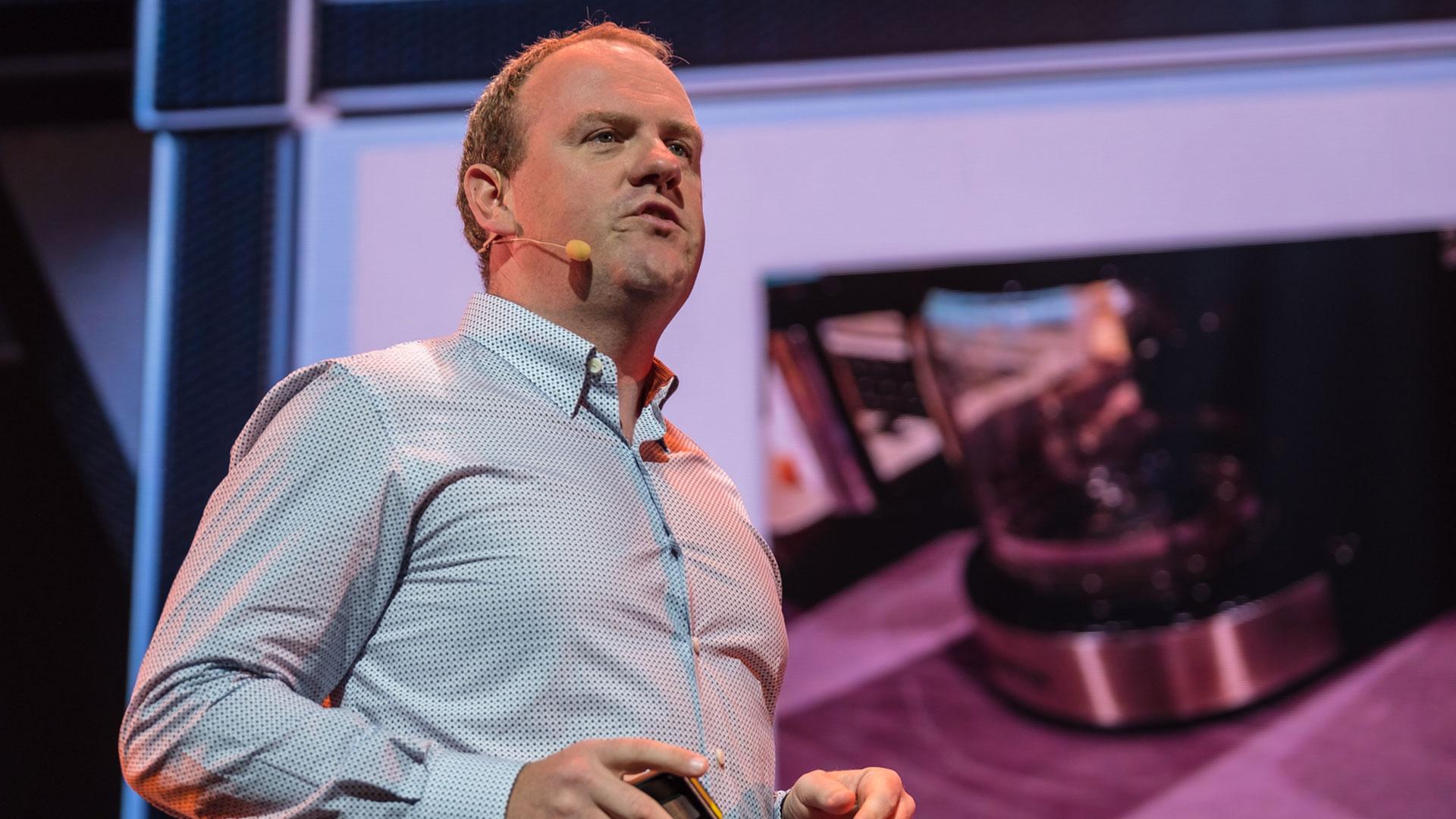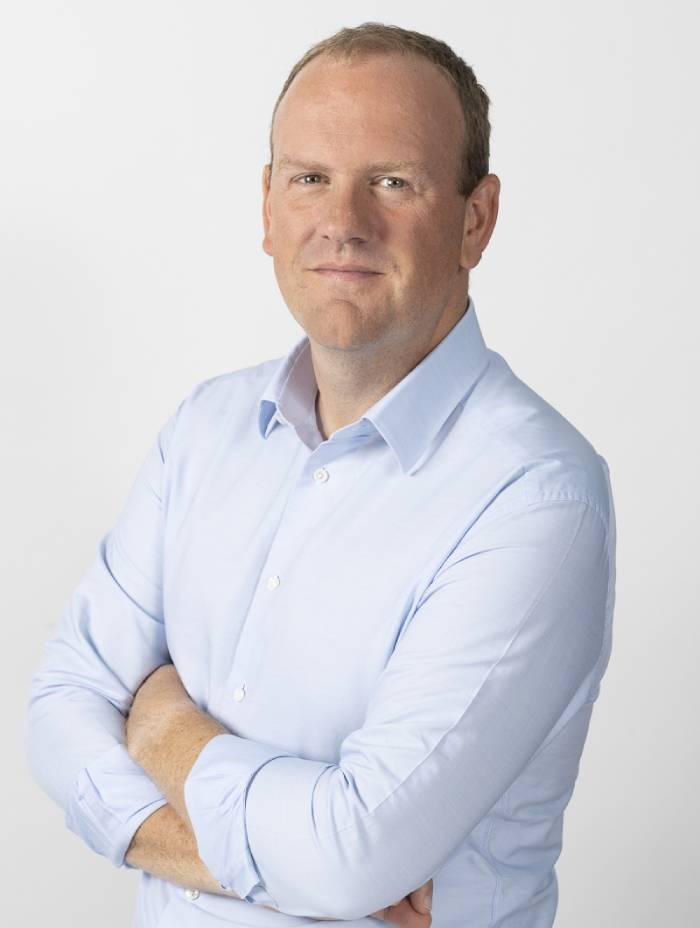From supplier to life partner: How to have your customers choose for you time after time
What makes or breaks an excellent customer experience? How do you create the ultimate value that has your customers return to your brand time after time? In ‘The Offer You Can’t Refuse’ Steven Van Belleghem, keynote speaker and author of management bestsellers, explains the service model of the future. We asked him how to create an irresistible customer experience.

Organisations wanting to differentiate themselves should take a close look at their service model. Today, customers expect companies to act as their life partner, empathising with their situation and proactively and efficiently supplying the solutions that enhance their overall comfort. When, on top of this, companies offer solutions for the social challenges our society faces, they're sure to gain their customers' long-term trust. Thus Steven Van Belleghem in his recent management best-seller ‘The Offer You Can’t Refuse’.
Digital: not new but normal
A high quality product or excellent service, a competitive price and good distribution … isn't that all you need to market your offer successfully?
Steven Van Belleghem: ‘Whoever still thinks this, has got it sadly wrong. Today, digital convenience is the absolute minimum: it's the basic requirement for a swift transaction between companies and their customers. People today expect to have one-click access to a series of services and products and have those delivered to their doorstep in no time. With technologies like 5G, artificial intelligence, quantum computing and robotics it will soon be standard for a system to deliver what you need - even before you even think about it. So companies that don't have their digital service sorted today will be facing difficult times tomorrow.’
The excuse that your target group isn't familiar with digital technology, doesn't fly. Companies must ensure that anyone is able to work intuitively, smoothly and problem-free with their interface - be it a website, an app or operating system.
Steven Van Belleghem: ‘If a digital interface doesn't catch on, this is not down to the target group but to the interface. It’s never the user, but the company that has to make the extra effort. Furthermore, we as a society must ensure that everyone can easily participate in the new digital normal: everyone should have the devices, applications and the knowledge to digitally work, study, gain knowledge or enjoy services. This is not only the responsibility of the authorities. Companies can and must also take their social responsibility here.’
Empathetic service
Should companies only serve their customers online from now on? Not at all, says Steven Van Belleghem, quite on the contrary. Digital transactions and an impeccable personal service should always go hand in hand. But the choice between online or personal contact is best left to the customer.
Steven Van Belleghem: ‘95% of the time a customer just wants an efficient online transaction: to click, pay and be done. The more user-friendly your interface or tool is, the more human the customer experience will feel to your customers. If, on top of that, you offer them the opportunity to have personal contact with an empathetic employee, you are sure to be in your customers' good books. An excellent example is Coolblue. Their website smoothly guides visitors to the product they are looking for, and gives them all the tools and information to help them decide online. If customers want personal advice, they can instantly get ‘a real Coolblue’er' on the phone.'
However, this new hybrid service model requires a new type of employee. No diehard salespersons who think in terms of figures and quotas, but people who want to empathise with their customers’ situation. People who think as a ‘life partner’ and offer them meaningful solutions, says Steven Van Belleghem.
‘This new customer service sinks or swims with the engagement of your employees. They are your front line ambassadors: they communicate about your services, promote them and help determine how your customers experience your brand. Therefore, one can no longer see customer experience and brand experience as two separate disciplines. Market and customer experience are closely intertwined, and your employees convey both to your customers. That's why it is crucial your employees experience your brand promise and company values first-hand – in 101 small ways. Only then can they commit to pass these values on to your customers.’
Partner in the life journey
With digital ease of use being the norm, how should companies differentiate themselves with their offer? How do they become the life partner of their customers?
Steven Van Belleghem: ‘I always like to use the metaphor of the African rhino and the oxpeckers: small songbirds, hitchhiking on his back. These birds do not bother the rhino at all. On the contrary, they keep his skin clean, healthy and tick-free. And: they serve as an alarm, alerting the poorly sighted rhino if they notice imminent danger such as poachers. This is exactly what companies should do for their customers. Being there and offering support where and when their customers need it – without their presence being experienced as inconvenient or intrusive.’
That's why companies need to switch from the traditional transactional to an empathic way of thinking. They should consider the concerns and dreams of their customers whenever they develop new products and ask themselves: how can we actively support our customers and proactively enhance their life’s comfort? If they succeed in offering the right solutions, they're sure to win the hearts of their customers time after time.
Steven Van Belleghem: ‘Developing a successful customer experience always starts from the life of the customer. A car manufacturer would do well to offer its customers mobility convenience rather than sell them a car: he should, for example, find ways to ensure its clients are able to navigate their daily work-home routes with ease. Health care is another example. AXA Partners has developed a teleconsultation platform for worldwide, virtual consultations with a local doctor. The service is available day and night, 24/7 and an excellent answer to the obstacles travellers, older or chronic patients face when monitoring their health. The Chinese Ping An Healthcare and Technology take this one step further. With The Good Doctor platform patients easily schedule an online consultation with a physician. Whenever the MD refers them to a hospital or prescribes medication, The Good Doctor platform automatically books the appointment or has the right medicines delivered at home or in a pick-up dispenser where they can be collected 24/7.’
Health care is becoming increasingly preventive. Certainly after the COVID-19 crisis, organising this prevention is a priority. Self-care is a crucial strategy here: not only does it keep people healthy, it also offers them emotional peace of mind.
Steven Van Belleghem: ‘A self-test for viruses? It won't be long before this is a standard item in your home medicine cabinet, just like a thermometer. Self-diagnosis will be taken even further in the future. An innovation incubator such as iCarbonX aims to innovate in order to help us stay healthy and boost our peace of mind and is experimenting with novel ideas. An example? Smart toilets analysing your stool and giving you advice for a healthier lifestyle on the basis of the results, or advise you to visit the doctor. A note of warning, though. Companies should continue to consider the ethics of the innovations they want to develop. Just because one has the technology to develop something does not mean they have to do so.’
Co Creation: working towards the customer experience
The successful customer experience Steven Van Belleghem describes sinks or swims by the collaboration with complementary partners who'll help with its development and a well-oiled network of service providers to deploy it.
Steven Van Belleghem: ‘Developing a customer experience that transcends the traditional boundaries of sector and product is not a one-company job. More than ever, companies will have to create their solutions in an ecosystem. To partner up with experts or enterprises willing to share their expertise, knowledge of the market and technological know-how.’
In doing so, companies should firmly focus on their objectives: what customer demand do they want to satisfy, how does this fit in with their business strategy and which go-live date is set? Thus, they avoid the co creative process having a delaying effect on a project or having it get stranded in its conceptual phase.
Steven Van Belleghem: ‘But also make sure your co-creation partners are capable of rolling out your service swiftly and with quality. Take the previous example of The Good Doctor: only if hospitals, pharmacists and suppliers of pick-up points work together seamlessly can the Ping An Healthcare service delight its customers.’
Empathy with your customer? Observation and research
How do you determine what people expect and require of your company? How do you offer your customers the right services and products at the right time?
Steven Van Belleghem: ‘Everything starts with your customer. The better you understand the challenges people in your target group are facing, where they can use a helping hand, what ambitions they have and what would increase their daily comfort, the better your services solutions will be. Be sure to have the movie of their life in mind. Only then can you formulate correct research hypotheses and link these to a research trajectory, analysing market trends and your own data. This way, you discover how your company can become meaningful for your customer and which products or services you can develop to this end.’
Taking social responsibility
The world is faced by unprecedented challenges: the climate, health care, government deficits, mobility… People are concerned about the state of the world. They no longer look to governments for the solution, but expect companies to offer an answer to these social issues.
Steven Van Belleghem: ‘Building a long-term relationship with your customer also means investing in trust and reputation. But trust and reputation aren't obtained through traditional marketing. They need to be earned by doing the right things right - for your customers and for society. Every product or service has a trade-off. Everyone likes fireworks, though we know that they aren't not good for the environment nor for the animals. By offering us the same firework experience using a light show or drones, a firework manufacturer shows that they understands our concerns.’
Whoever finds a way to add social value to his offering and take up his social responsibility is certain of success. However, to really have an impact, a company must make sure that this social aspect is logically aligned with their brand.
Steven Van Belleghem: ‘Take Warby Parker. This manufacturer gives one set of spectacles to less-privileged children for each set you buy. Another nice example is the Cheerful Classrooms programme from paint manufacturer PPG and their PPG Foundation. Each year, all the coworkers and managers take up the brush to paint a school building or classroom and make the world a brighter place. While doing so, they convey the values the company stands for to their customers and employees: show, don’t tell.’
Want to read more? Visit Steven Van Belleghem’s website and discover ‘The Offer You Can’t Refuse’.

About Steven Van Belleghem
Steven Van Belleghem is an expert in modern customer relations and customer experiences in a digital world. He is a much in demand speaker at home and abroad. He has written a number of international marketing and management best-sellers, including ‘The Offer You Can’t Refuse’ , hailed by Forbes as one of the 10 must-reads of the year.
Steven Van Belleghem is also an entrepreneur. He is the co-founder of inspiration office Nexxworks and co-founder of content creation company Snackbytes. He is a part-time marketing professor at Vlerick Business School and guest speaker at the London Business School.


